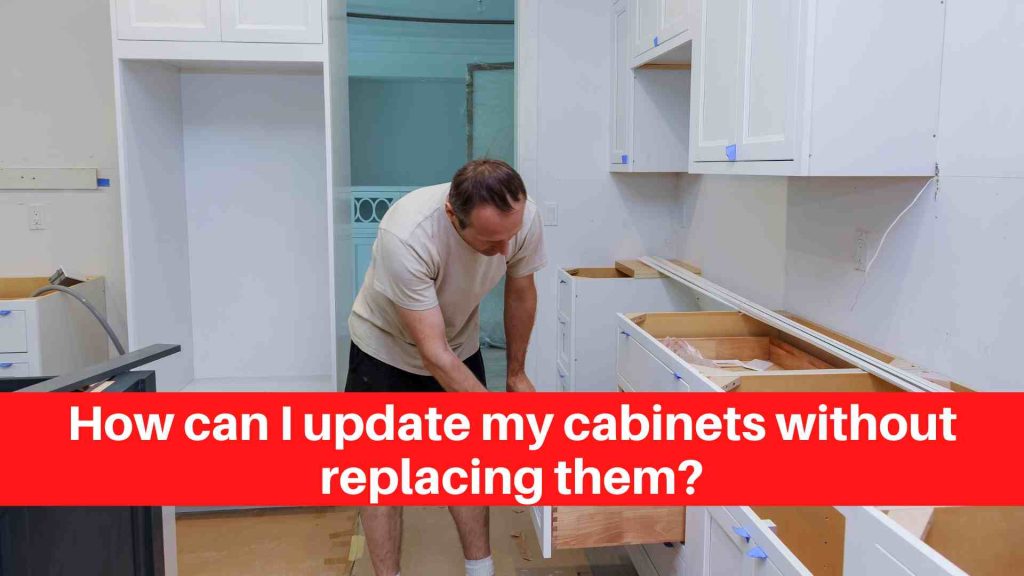How can I update my cabinets without replacing them?

How to Reface Cabinets Without Replacing Them
There are a few things you can do to update your kitchen cabinets without having to replace them. You can refinish them to give them a new look and tone, or you can try a completely different style. If your cabinets are in good condition, you may not need to go too far to update them; a fresh coat of paint or new hardware can suffice!
If you want to reface your cabinets without replacing them, you have a few options. You can try out the following techniques:
-Sand and scrape the old finish off the cabinet with a sandpaper block or belt sander. If your cabinets have a laminate finish, wear gloves and protect your eyes from dust and flying particles.
-Wet the cabinet’s surface before applying a coat of wood sealer. Allow the sealer to completely dry before starting the new finish.
-If your cabinets have a solid wood frame, stain and seal them as usual. If the wood has a veneer or another type of coating on top, remove as much of it as possible with a sharp knife before staining and sealing.
The benefits and drawbacks of cabinet refacing
There is an inexpensive way to refresh your cabinets if they are looking tired and worn. Cabinet refacing is a low-cost way to improve the appearance of your cabinets without replacing them. There are several methods for refinishing cabinets, each with their own set of benefits and drawbacks.
Sanding is the most common method for refacing cabinets. Before applying a new finish, sandpaper is used to remove the old one. The disadvantage of sanding is that it wears down the surface of your cabinets over time, which may necessitate repeating the process several times.
Another option for cabinet refacing is painting. After priming and painting the entire cabinet surface, it is sealed with a protective coating. Painting is more expensive than sanding or applying a sealant, and it may not look as good as a finished cabinet with a paint job.
A final option for refacing cabinets is wood filler. This product restores the luster of the wood surface by filling in holes and cracks. Although wood filler is less expensive than other alternatives, it may not last as long.
Styles of Cabinet Refacing
There are several options for refacing cabinets without having to replace them. Remove the old cabinets, then sand and fill any cracks or gaps with wood filler, prime, and finish with a high-gloss enamel.
Another option is to glue a wooden frame to the existing cabinet front and sides. The frame can either be painted or left unfinished. The doors and drawer fronts are then replaced, with any gaps filled with wood filler and primed again.
If you don’t want to spend a lot of money, you can paint or use another type of finish to update your cabinets. Before applying a new finish, you’ll need to sand down the old one. If you intend to paint them, use a sealer first; otherwise, the paint will simply peel off over time.
What Else Can Old Cabinets Be Used For?
If you don’t need to replace your cabinets right away, there are other ways to update them without having to disassemble them all. One option is to apply a clear coat of paint. This will protect the wood and bring it back to life. You can also play around with various finishes, such as distressed or glossy. If you want a more permanent solution, consider refacing your cabinets. The old finish is removed and replaced with a more durable material, such as cabinet grade plywood or MDF, during refacing.